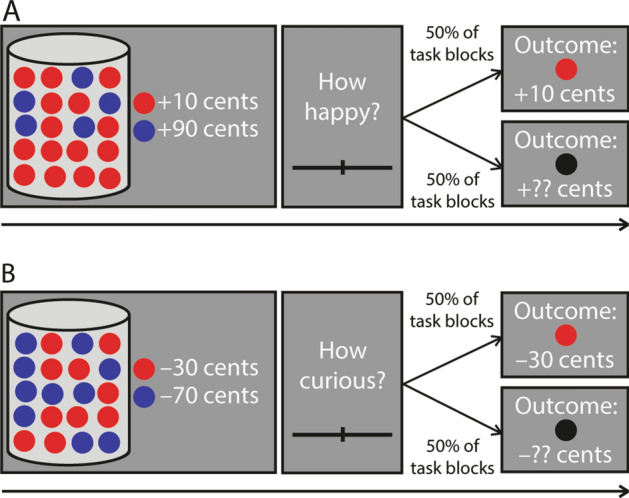Figure 1.

Schematic depiction of the happiness task (a; Experiment 1) and the curiosity task (b; Experiment 2). (A) Schematic depiction of a gain trial in the happiness experiment (Experiment 1). Participants saw a screen on which a vase with 20 red and blue marbles was depicted and the monetary values associated with the marbles. These monetary values could either both be positive (in gain trials, depicted here) or both be negative (in loss trials). One marble was selected randomly from the vase and participants would actually gain or lose the money associated with the selected marble. Next, participants indicated how happy they were that the selected lottery would be played on a sliding bar (visual analogue scale). In half of the task blocks, participants would always see the outcome, and in the other task blocks they would never see the outcome. Importantly, participants could not influence which marble would be selected and they were awarded the money associated with the selected marble, regardless of outcome presentation. (B) Schematic depiction of a loss trial in the curiosity experiment (Experiment 2). The task was the same as in Experiment 1, but instead of giving a happiness response, the participants had to indicate how curious they were about the outcome. See “Methods” section (Procedure) for details on the timing of the experiments.
